The Best Orthotics for Pronation – STOP Your Kids’ Foot and Leg Pain!
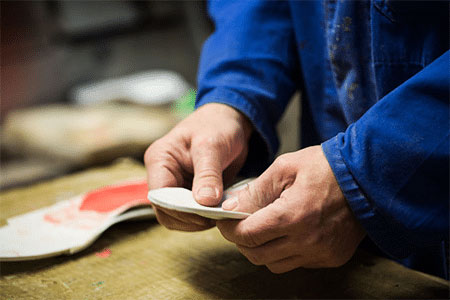
As a passionate shoe fitter specializing in children’s footwear and orthotics, I’ve seen firsthand how transformative the right pair of shoes and orthotics can be. While every child has some degree of pronation, problems arise when it’s excessive (overpronation), leading to poor posture and potential foot and leg pain. The best orthotics for pronation can significantly improve your child’s walking gait, posture, and prevent discomfort. Based on my years of experience fitting shoes and orthotics, I’ll share my top two recommendations to provide optimal support and comfort for your child.
The Importance of Being Proactive
The first seven years of a child’s life are crucial, as they are the “golden years of treatment opportunity.” During this time, permanent structural changes of the foot and lower extremity can be relatively easy to achieve with supportive shoes and orthotics.
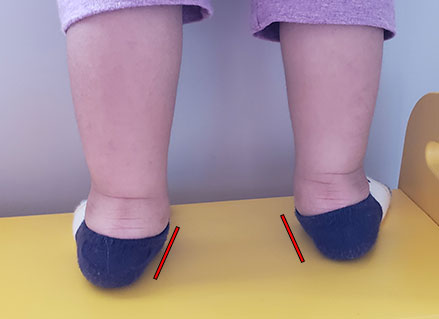
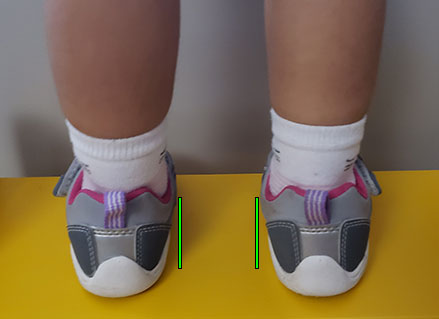
Signs of Pronation
- Feet that roll inward when walking
- Uneven wear on the inside edge of shoes
- Complaints of foot or heel pain
- Outward-pointing toes when walking
My Experience Fitting Children’s Shoes and Orthotics
As someone who has worked in a specialized children’s shoe store for over a decade, I’ve gained extensive knowledge about fitting children for shoes and orthotics. Every child’s foot is unique, and finding the right solution requires a personalized approach.
I collaborate closely with healthcare professionals to ensure each child receives the best care possible. Witnessing the transformation in children’s mobility and comfort levels after being fitted with the correct orthotics is one of the most fulfilling aspects of my job. It’s not just about selling a product; it’s about improving a child’s quality of life.
Before and After: The Impact of Orthotics
Parents often wonder if orthotics will make a noticeable difference in their child’s foot health. Before and after images of children standing barefoot versus wearing orthotics can be quite revealing.
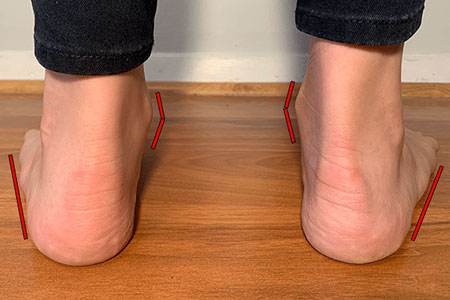
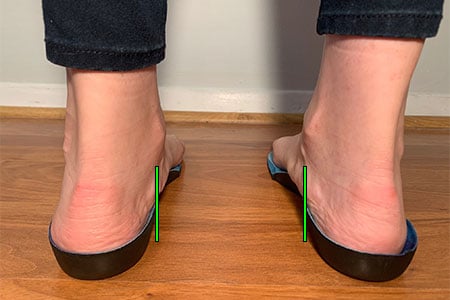
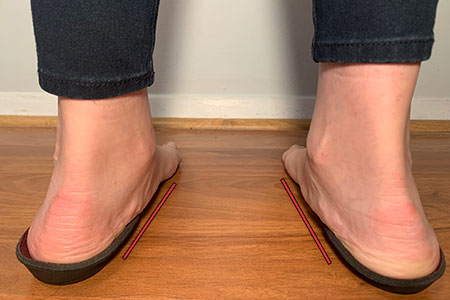
The Consequences of Not Dealing with Your Child’s Pronation
Once your child is diagnosed with pronation, it’s important that you act fast. The first step is to provide your child with a pair of good supportive shoes and orthotics, otherwise, pronation might lead to the following foot issues:
- Calluses
- Foot Rigidity
- Hammer Toes
- Ankle Sprain and Foot Instability
- Hammer Toes and Claw Toes
- Plantar Fasciitis
- Back and Hip Pain
The most simple way to prevent all of those issues is to provide your child with the correct type of shoes and the correct type of orthotics. However, choosing the correct type of orthotic for your child is not an easy thing to do, as there are different types of orthotics such as soft, semi-rigid, or rigid.
Key Features of Orthotics for Pronation
Deep Heel Cups: Most parents of children with flat feet make the common mistake of assuming that they need to find an orthotic that provides good arch support. When a child has a flat foot, you don’t only support the arch, you mechanically support the pieces of the foot that cause the foot to be flat such as the heels.
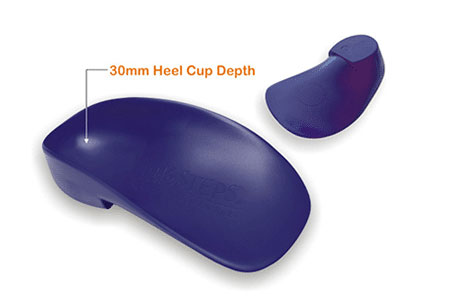
Stable Base of Support: The orthotic has a foam or a visible bump where the arch of your toddler’s foot is supposed to sit. This helps improve foot posture and reduce stress on your toddler’s feet and legs.
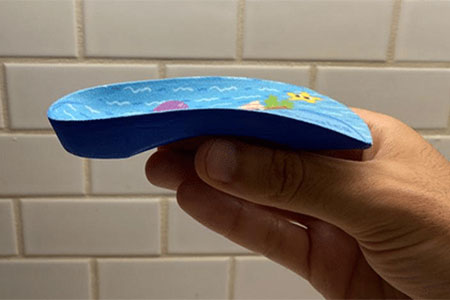
Best Orthotics for Pronation: Footlogics and LittleSTEPS
I recommend two orthotics based on your child’s pronation. For mild pronation (flat feet with no pain), Footlogics orthotics are ideal. For moderate to strong pronation (visible flat feet and pain), I suggest littleSTEPS orthotics. Both options are listed below.
Orthotics for Mild Cases of Pronation
Footlogics are some of the best orthotic inserts for pronation (mild degree), providing arch support and correcting overpronation. Ideal for children with flat feet, they easily fit into most shoes, redistributing pressure to reduce pain and improve posture.
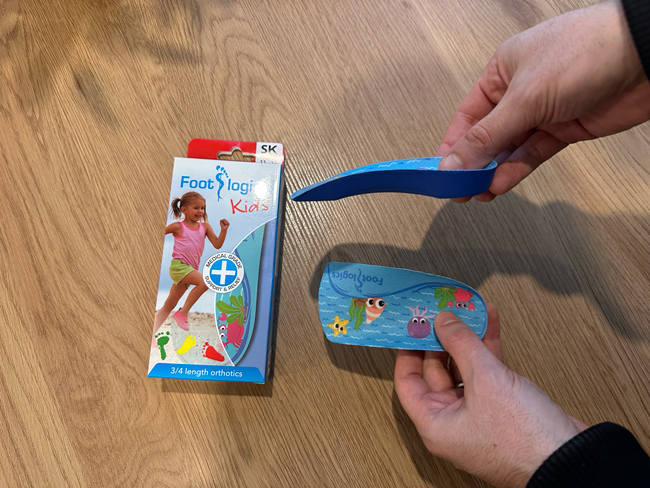
- Order the 3/4 length Footlogics orthotic inserts for toddlers on Amazon
- Fits toddler shoe size 5 through little kid shoe size 13
- 3/4 length makes it ideal to fit in most shoes
- They can be trimmed to the perfect size using scissors if necessary
- It’s not necessary to remove the original insoles of the shoes when fitting this orthotic
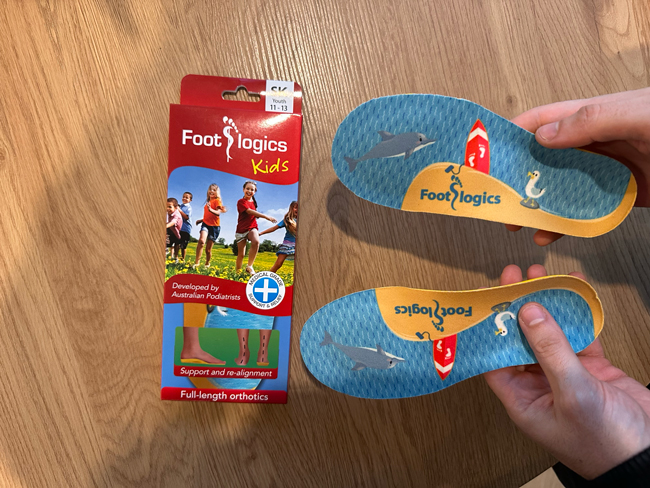
- Order the full-length Footlogics orthotic inserts on Amazon
- Fits toddler shoe size 5 up to big kid shoe size 3
- They can be trimmed to the perfect size using scissors if necessary
- You must remove the original insoles from your child’s shoes before placing the orthotic inside
Orthotics for Moderate or Strong Cases of Pronation
LittleSteps orthotics are perfect for kids with moderate to strong pronation. They help guide the foot into a more natural position, reducing strain and improving function, while supporting healthy foot development and easing discomfort.
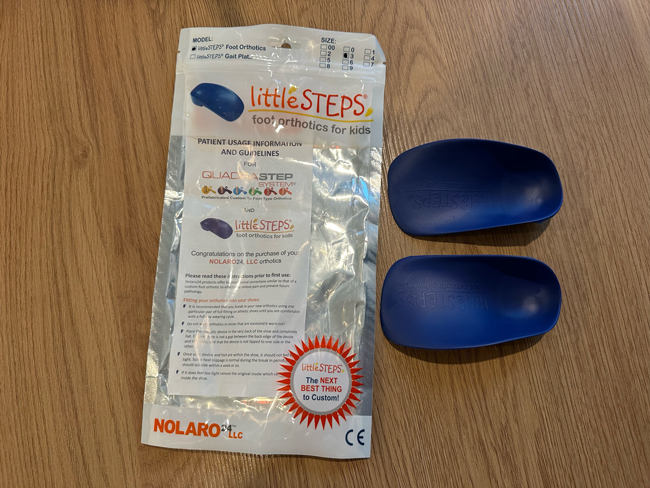
- Order littleSTEPS® Orthotics from their official website. You must submit a Referral Code to complete your order: JVFCS100121
- It’s not necessary to remove the original insoles of the shoes when fitting this orthotic.
- The 3/4 length design makes it easier to fit into various shoe styles.
- Take a look at this chart to figure out what size to order based on your child’s shoe size.
Bonus Resource: Supportive and Deep Shoes for Orthotics
Choosing the right shoes is just as important as selecting the right orthotics. Shoes should be supportive and deep enough to accommodate orthotic inserts without causing discomfort. Selecting shoes with a wide toe box can also be beneficial, as it allows the toes to splay naturally, promoting better balance and comfort. It’s important to prioritize quality over style, as well-made shoes will offer the necessary support to complement the orthotics.
Contact Me for Specific Shoe or Orthotic Recommendations
For specific shoe recommendations or if you are unsure about which orthotic to choose, feel free to contact me via email. I’m here to help guide you through the process and provide personalized advice based on your child’s needs. A collaborative approach ensures that your child receives the best possible support for their feet, promoting healthy development and comfort.
Real-Life Success Stories
Over the years, I’ve witnessed numerous success stories where orthotics have significantly improved children’s lives. From reducing pain to enhancing mobility, orthotics have proven to be a game-changer for many families.

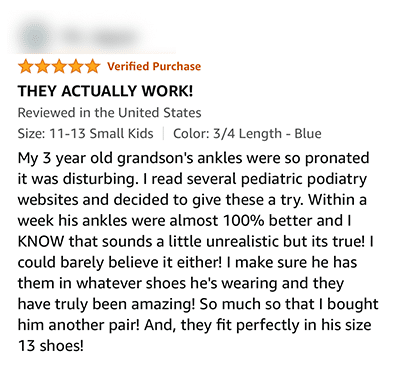
Hearing from parents about how their child’s mood and engagement in activities have improved is incredibly rewarding. These success stories highlight the importance of early intervention and the right support for children’s foot health.
Be Proactive and Prevent Foot Pain!
One of the biggest issues with pronation is that kids who pronate might be more inclined to sit rather than run and play due to the extra stress their feet and legs take. This means that when your kids are walking or running long distances they will experience foot and leg fatigue and they might refuse to participate in certain activities or sports. This fatigue happens because your children’s muscles are working harder due to the body’s poor positioning.
I always recommend parents to be proactive and don’t take the “wait and see approach” when it comes to treating their children’s foot conditions. Leaving your children’s foot conditions untreated can only lead to the condition getting worse.


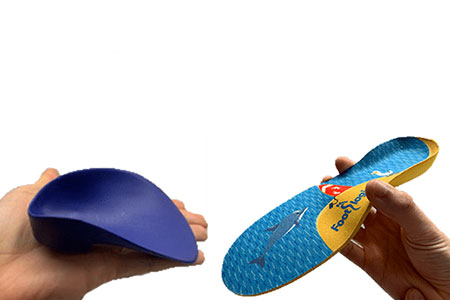
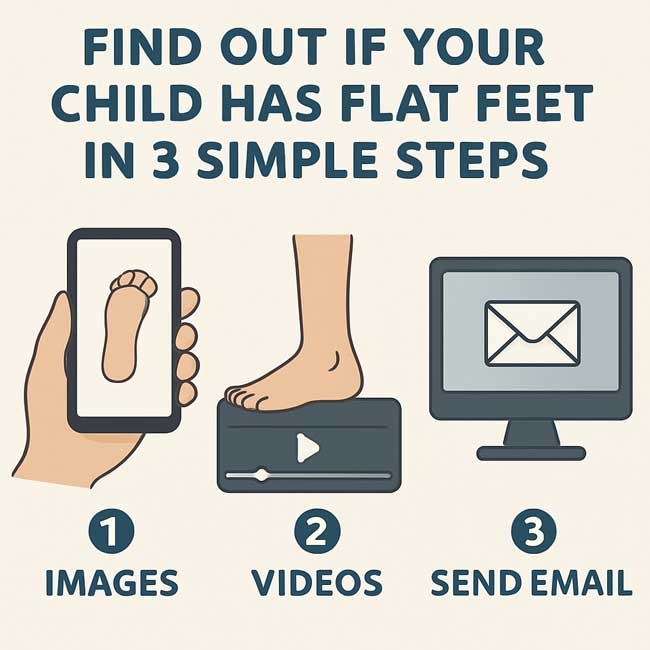
Our family has a long athletic history with college hall of fame athletes. However, we also have a long high arch, pronation history. Many of us had to wear orthotics while playing sports. My grandson is 4 years old and has started youth hockey lessons. He is already an incredible athlete with extraordinary hand eye coordination for his age. But his favorite sport is hockey. In his hockey skates, his feet pronate badly, which tilts his skate blades off perpendicular, making skating very difficult. What orthotics would you recommend for him for inside of his hockey skates? Thanks very much.
Hello Rob —
It’s really encouraging to know how having foot conditions didn’t get in the way of performing at a competitive level.
It seems like your grandson is dealing with moderate to strong pronation. The biggest issue we have is that most orthotics are hard to fit inside hockey skates. The orthotic I have in mind fits like a heel cup and it won’t take as much space inside the skates as a full eight orthotic. I suggest that you try the littleSTEPS which is the second orthotic recommended in this article.
Thank you, Juan. We will give them a try.
Best,
Rob
Keep me posted.
Thank you so much for your fast response. We will wait until we receive the inserts in order to buy the shoes.
Sounds good. Keep me posted.
Thank you so much.Just measured his feet,and unfortunately he is in between sizes.His foot measures 22 cm.Should I go with the bigger size in this case?
His feet look just like in the pictures posted on this site.Also,when buying the new balance sneaker,what size should I go with to accomodate the inserts?
We wears a size 4 US,but I’m sure his feet will keep growing.
I apologize for the million questions.As of right now he is wearing the Tulli’s cheetah and the heel cups.Helping a bit,but not a whole lot.
Hello Ann,
Based on the measurements that you sent me your son needs a shoe size 5 in order to allow for growing room. Make sure that you order the shoes in your son’s correct foot shape (narrow, medium, wide, extra wide).
The shoe size 5 will accommodate the inserts. Which ones did you get?
I suggest that you apply this shoe lacing technique: How to Tie Shoes with Orthotics – Stop Heel Slippage
Hello Juan,
Thank you for this post.My son is 12 yo and he is a competitive gymnast. He practices between 3 to 4.5 hours a day,6 days a week.He is also homeschooled, so a lot of barefoot time unfortunately.He’s had 2 fractures on his left ankle,and he also has Sever’s disease.Now he started having pain in right heel,along with pain in his left ankle.I see his ankles are turning inwards which makes me believe he has pronation.We are now looking into the new balance shoes you recommend, but was wondering about some really good insoles too,but not for flat feet.Amazingly he doesn’t have flat feet.
I also have extremely high arch, and custom made insoles that were a fortune did not help.
Hello Ann,
In your case, I’d recommend trying my second orthotic option, littleSTEPS. It’s a 3/4-length orthotic specifically designed to provide extra support for the heels and ankles, helping your child stay comfortable and stable throughout the day.
Make sure that the orthotics are paired up with the correct type of shoes.
Thank you, Juan!
I also found these with removable liners. Maybe we can fit the orthotics in it. Hopefully the heel is sturdy enough. Thank you so much for all your help.
https://amzn.to/3Y2V8eA
Hello Lenka,
They seem sturdy and supportive. The only downside is that they are not available in wide widths, and orthotics take a lot of extra space inside the shoes.
Thank you. I was thinking about shoes that have warm interior for cold weather like duck boots and insulated winter boots for sledding. Something he can wear in the snow.
Hello Lenka,
These boots are insulated and provide more support than other regular boots. Please find below my recommendations:
Insulated Boot: Option 1
I hope this helps.
Also, doe he need orthopedic shoes to wear at home or can he be barefoot?
I aporeciate your help.
Hi,
Our 3.5-year-old son has just received orthotics for overpronation and we also got him New Balance shoes 990V you recommend. Thank you! Could you please recommend good Fall and Winter shoes as well? Also, how long will it take for our son until his feet are nice and straight?
Hello Lenka,
As long as the shoes were properly fitted and the orthotic provides good support, you should see an improvement in the way your child walks between 2 weeks. Just out of curiosity, what type of orthotic is your child wearing?
What is your son’s foot width? Is it narrow, medium, wide, or extra wide? Once I know that I can provide you with specific Fall and Winter shoe recommendations.
Hi Juan,
Thank you for your reply. The orthotics were fitted at the special clinic per our son’s orthopedic’s recommendation and they are bilateral custom molded foot orthotics with full lenght soft top cover and 3/4 length semi-rigid material, full heel post and deep heel cups. We were told he would need to wear them up until puberty! Does it seem right? We were hoping up to 2 years he should be fine as he is a mild case and very flexible at this age… His feet are medium width.
Hello Lenka,
It’s hard to tell if your son will have to wear the orthotics until puberty because it will depend on how well he adjusts to the orthotics. I have seen several cases where children wear the orthotics for a couple of years and then they just wear good supportive sneakers. In some cases children have to wear their orthotics for most of their lives.
Your son can be barefoot at home but he should wear his shoes and orthotics as much as possible.
Do you need Fall and Winter shoes that he can wear with the orthotics?
Yes please, kindly recommend the Fall and Winter shoes. He is wearing 990v4 new balance sneakers in size 9.5 with orthotics. Without the orthotics, he is size 9.
Hello Lenka,
All of the shoe styles below are waterproof and you will be able to fit your kids’ orthotics if you have to. Please find below my recommendations:
Winter/Fall Shoe for Orthotics: Option 1
Winter/Fall Shoe for Orthotics: Option 2
Winter/Fall Shoe for Orthotics: Option 3
Are these the type of shoe styles that you had in mind?
I hope this helps!
Above you indicated: Below you can find a selection of the best orthotics for pronation!
But I don’t see the selection… there is only the kidsole… Is that the only one?
thanks.
Hello Kay,
Sorry for the confusion. Yes, that is the only one. While there are several different orthotic styles for children with pronation, I have found that particular style to be the most effective one when it comes to improving children’s posture and preventing their feet from collapsing.